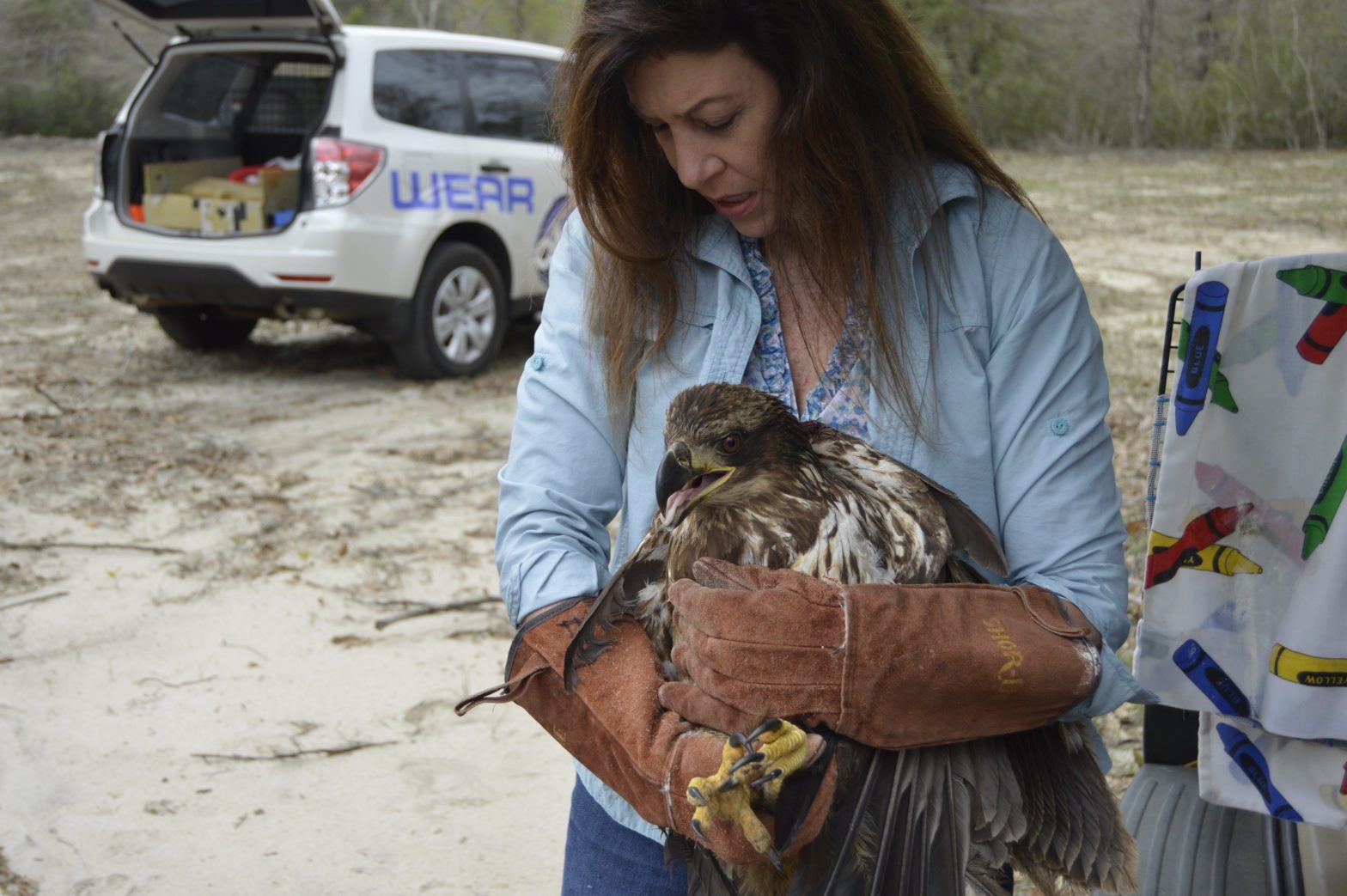MILTON — Mardi has a second chance at life thanks to numerous people’s efforts.
After Central Landfill workers found the juvenile bald eagle Feb. 23, Santa Rosa County Animal Services Director Dale Hamilton transported the bird to the Wildlife Sanctuary of Northwest Florida in Pensacola.
“[She] looked rough when we found [her],” Hamilton said, adding the eagle initially seemed dead. “I just had a towel and a pair of gloves. That’s why it was so intimidating.”
Sanctuary director Dorothy Kaufmann transported the bird in the back of her SUV to an open lot in Milton for release.
Animal Services and sanctuary staffers released the young, rehabilitated bald eagle Friday morning.
NAMING AN EAGLE
So, what’s the origin of Mardi’s name?
“She was found in February, and we needed a name for the X-ray,” Kaufmann said. “Tommy Knight, the veterinarian at Westside Animal Hospital said, ‘How about Mardi, for Mardi Gras?’”
Mardi is approximately 2 years old — based on size — and mostly chocolate-brown, weighing 10 pounds with an 8-foot wingspan.
The sanctuary did not perform blood work on the eagle to specify its gender, however, staffers can assume Mardi is female based on her beak and wingspan; female bald eagles’ wingspan is 8 feet, while males’ is 6 feet. Females have a deeper beak as well.
“We can tell the age by the color of the head and the tail,” Kaufmann said. “It takes five years to get the white head and the white tail, as well as a lemon-yellow beak and lemon-yellow eyes.”
‘IT’S LIKE FOOD POISONING’
Animal Services encounters injured or ill bald eagles several times a year, according to Hamilton.
This is the third bald eagle found at the Central Landfill since December, Kaufmann said.
“One went to the Emerald Coast Wildlife Refuge, and two came to us,” she said.
All three eagles found were ill rather than injured; this was similar to three or four birds found in 2014. Sanctuary staffers initially wondered whether malice caused the birds’ condition. However, they discovered that natural toxicity was the culprit.
“They get ill from eating stuff that is not turned over in a timely manner in the landfill,” Kaufmann said. “Gulls and crows eat from the landfills, and become ill. They become easy targets for the eagles.
“Birds can get ill from that like we can from salmonella. It’s like food poisoning.”
In December, Sanctuary staffers rehabilitated an eagle named Santa Baby for the same illness.
“After four days of flushing the system, supportive care, treatment for shock, it was totally back to normal,” she said. “We treat them by [fixing] their body temperature, fluids, flushing their system and giving them electrolytes. We always test for lead poisoning.”
A TEMPORARY HOME
Sanctuary staffers hold the birds in 100-foot cages with 25-foot rounded areas on each side of the enclosures. This allows them to fly without ceasing.
Staffers don’t want to keep the birds too long because doing so could affect muscle tone or imprint, Kaufmann said. However, birds with muscle issues or breaks can heal there for up to six months.
As for Mardi?
Her release went as well as it could have gone, according to Kaufmann. The bird flew straight out of her hands and into neighboring trees.
Mardi had a calm demeanor, but Kaufmann said that shouldn’t quell concern.
The bird was “probably contemplating [her] death,” Kaufmann said.
This article originally appeared on Santa Rosa Press Gazette: Rehabilitated eagle released
